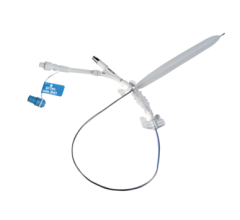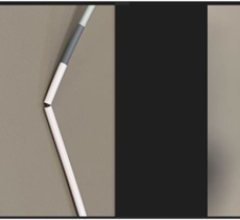February 18, 2008 - Treating patients who have occlusive femoropopliteal disease with paclitaxel-coated balloons during angioplasty — rather than the uncoated variety — leads to significant reductions in late lumen loss and target-lesion revascularization (TLR), according to a study published in the February 14, 2008, issue of The New England Journal of Medicine.
Data from the THUNDER (Local Taxane with short time contact for reduction of restenosis in distal arteries) trial, led by Gunnar Tepe, MD, of Eberhard Karls University (Tübingen, Germany), was presented in Washington, D.C., at the TCT 2007 symposium.
The trial, randomized 154 patients with stenosis of a femoropopliteal artery to treatment with angioplasty using paclitaxel-coated balloons, angioplasty with uncoated balloons but with paclitaxel dissolved in the contrast medium, or normal angioplasty without any additional paclitaxel (control). The results showed that at a 6-month follow-up, the paclitaxel-coated balloon group had significantly improved late loss and TLR, compared with controls.
The lack of effect in the patients treated with paclitaxel in the contrast medium differed from previous findings in animal models. Dissolving paclitaxel in contrast medium is known to enhance drug solubility, but the authors explained that most studies examining this method were performed in the coronary circulation, which differs with respect to vessel diameter and capillary supply of the muscle from the peripheral circulation in the leg. The authors noted that this could explain why paclitaxel in the contrast medium failed to work in the THUNDER trial, because “these differences influence local drug effects,” they wrote.
Even though TLR was significantly reduced in the coated-balloon group, repeat revascularizations appeared to be angiographically — not clinically — driven since symptom measurements remained the same at six months.
The trial however does not offer a comparison to bare metal stents (BMS) for peripheral revascularization, despite increasing research now showing that BMS are better than angioplasty alone in treating lesions of the superficial femoral artery (SFA).
For more information: content.nejm.org/cgi/content/full/358/7/689


 June 13, 2024
June 13, 2024 








